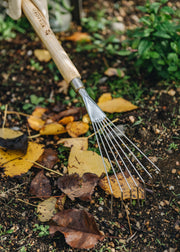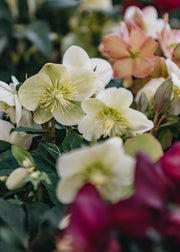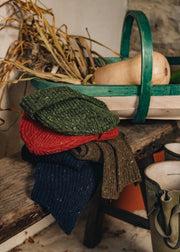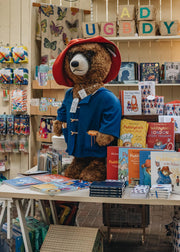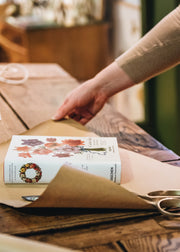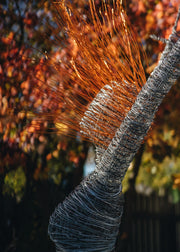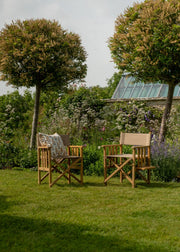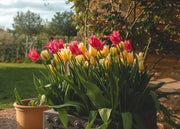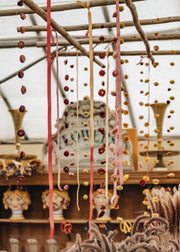The Wild Flower Bulb Garden
Whether forming a jewelled carpet over the lawn or adding much needed interest under bare trees, leaving spring flowering bulbs in the ground and allowing them to spread year after year is an effortless way to bring colour to the garden, and, at the same time, provide an early source of food for emerging pollinators. Not all bulbs will naturalise, so it is best to select a native species - to benefit bees and other pollinators who do not find the hybridized varieties so appealing - and to ensure you have drifts of simple spring flowers that will appear to have sprung like magic from the ground.

Narcissi punctuating the lawn
Firstly, choose a low traffic area of your garden which has room for the bulbs to spread. You may want to mix your bulb selection for colour, height and successional flowering, or prefer to concentrate on just one species, but you will probably need more bulbs than you think.
Lawns require early flowering bulbs as you’ll need to allow six weeks after flowering has finished before you can mow the grass. Snowdrops (Galanthus), Crocus, native Daffodils (Narcissus), Tulips and Fritillaries (Fritillaria) are all good choices here. Throw your bulbs onto the ground and plant them where they fall for a spontaneous effect, but don’t overcrowd the space as this will reduce flowering. A general rule of thumb is to plant the bulbs three times the depth of the bulb, and when you replace the piece of earth with the turf, ensure it sits flush with the lawn. For smaller bulbs, like Crocus, it may be easier to remove a long strip of turf, plant the bulbs and then replace the grass – if you do this, try and underscore the turf to loosen the grass before you replace it.
The wild side
Areas under trees and shrubs look bare after winter as they can often be too dry or shady for most perennials. This isn’t an issue for bulbs, who flower in spring before the leaves on the trees have fully emerged to throw shade. Offering sapphire luminescence, Grape hyacinths (Muscari) and Bluebells (Hyacinthoides Non-Scripta) are fantastic at self-seeding – but beware, bluebells are almost too good at propagating and can sometimes overwhelm other plants. Pretty Cyclamens can form a striking drift and Winter Aconites (Eranthis hyemalis) also provide early ground cover, generously bestowing a joyous golden hue to the winter garden.

Muscari (Grape Hyacinth)
Wherever you position your bulbs, one fact is key- they must be left (with wilting foliage attached) for six weeks after flowering to enable the plant to absorb energy and build up strength in the bulb for next year’s display. Wild Gardens are never manicured, so embrace this untidiness in anticipation of the joys to come next spring.


